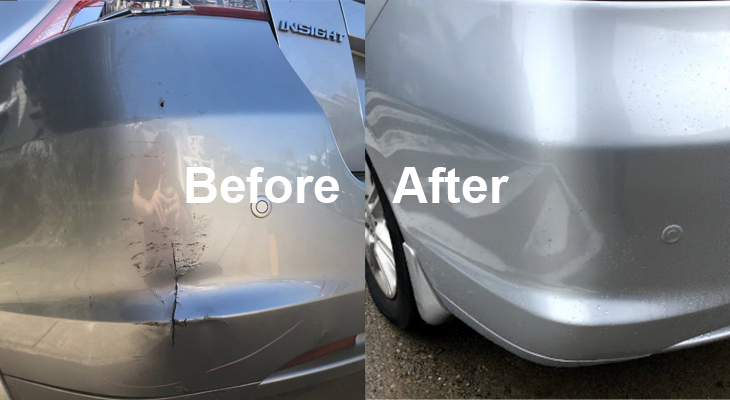A car bumper, whether front or rear, is a crucial component designed to absorb impact in a collision, reducing damage to the vehicle’s more delicate parts. While bumpers are built to withstand a certain level of impact, they can still sustain damage in accidents or even through daily wear and tear. Repairing or replacing a bumper can vary significantly in cost, depending on factors like the extent of damage, type of bumper material, and labor costs. Understanding the various factors that influence bumper repair expenses can help you plan and budget accordingly.

Image: www.brisbanebudgetbumperrepairs.com.au
Assessing Bumper Damage
The first step in determining the cost of bumper repair is to assess the extent of damage. Minor scratches, dents, or cracks can often be repaired through simple methods like touch-up paint or dent removal, which typically cost less than more extensive repairs. However, if the bumper is severely damaged, cracked, or has large missing pieces, replacement may be necessary.
Types of Bumper Materials
The material of the bumper also affects the cost of repair. Common bumper materials include:
- Plastic: Plastic bumpers are lightweight, flexible, and relatively inexpensive to repair. Minor damage can often be repaired using plastic welding or adhesives.
- Metal: Metal bumpers, typically made from steel or aluminum, are more durable than plastic but also more expensive to repair. Deep dents or cracks may require more involved repairs or even replacement.
- Fiberglass: Fiberglass bumpers offer a combination of strength and flexibility but are more susceptible to cracking. Repairs can be challenging and may require specialized techniques.
Labor Costs
Labor costs comprise a significant portion of bumper repair expenses. Body shops charge hourly rates, which can vary depending on location, technician experience, and the complexity of the repair. Labor costs can increase if the bumper needs to be removed or if there are underlying structural issues that require additional work.

Image: www.youtube.com
Additional Factors Influencing Cost
Other factors that can influence bumper repair costs include:
- Vehicle model and year: Bumper design and materials can vary across different vehicle models and years, affecting the availability and cost of replacement parts.
- Insurance coverage: Whether or not bumper repair is covered by insurance depends on the policy’s terms and the cause of damage.
- Body shop reputation and location: Reputable body shops typically have higher labor rates but often provide superior workmanship and warranties. Location can also affect costs due to variations in local labor rates and material availability.
Estimating Bumper Repair Costs
To obtain a detailed estimate for bumper repair, consult a qualified body shop. They will inspect the damage, determine the extent and type of repairs required, and provide a detailed cost breakdown. It’s advisable to get estimates from multiple body shops to compare prices and find the best combination of quality and affordability.
DIY Bumper Repair
For minor bumper damage, DIY repairs may be an option for skilled individuals. However, attempting major bumper repairs without proper training and equipment is not recommended, as it could lead to further damage or safety hazards.
How Much Is It To Fix A Bumper
Preventative Measures
To minimize the risk of bumper damage, consider the following tips:
- Maintain a safe following distance: Keep a safe distance from other vehicles to reduce the risk of rear-end collisions.
- Park carefully: Park in designated spaces, avoiding contact with nearby objects or vehicles.
- Install parking sensors or cameras: These devices can help detect obstacles and avoid accidental contact.
- Regular maintenance: Keep the bumper clean and free of dirt and debris to prevent premature deterioration.
By understanding the factors that influence bumper repair costs and taking preventative measures, you can ensure that your bumper is properly maintained and repaired when necessary, keeping your vehicle protected and looking its best.










